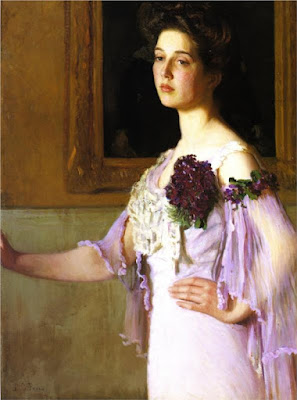 |
| "Muddy Alligators" by J.S. Sargent |
The fire within him, burning to record and express, was already at work. Every day was quickening his powers of observation and his precocious aptitude. In a letter written to his friend Ben del Castillo in May of 1865 nine-year-old John wrote from Biarritz:
May 18th, 1865 Dear Ben, Day before yesterday we went to San Sebastian where there is a fort on the top of a hill. Near the foot there are a great many English soldiers' graves. I have a little picture of one in my album. I also made a little picture of the Battery, and a good many ships. While I was sitting down drawing one of the tombstones, Mamma and Papa went up to the fort on the top of the hill, leaving Emily and me, because the hill was too steep for Emily to go up. While I was drawing something some of the workmen who were making a new road up to the fort, came and hid Emily and me under a rock, because they were just going to blast a rock half way up the hill...
Later in the summer Mrs. Sargent and her children went to London to await the return of Mr. Sargent from America. In October they were in Paris, and another letter to his friend records the sights and events which had impressed him during his first visit to London.
Oct. 13th, 1865 Dear Ben, We spent several weeks in London and the things which interested me most there were the Zoological Gardens, the Crystal Palace, the South Kensington Museum. At the Zoological Gardens we saw the Lions fed, and I rode on a camel's neck, and Emily and I rode on an elephant. I made several drawings of the animals there. At the Crystal Palace we saw models of some of the animals which lived upon the earth before man. I copied several of them, the Iguanodon, Labyrinthodon, Pterodactyle, Ickthyosaurus, Megalosaurus and Mammoth... At the South Kensington museum we saw some very fine paintings of Landseer, the celebrated animal painter, and a very fine picture by Rosa Bonheur called The Horse Fair...
The letters are slight, but not without significance. There is no irrelevance or comment. He catches the essential trait of what has roused his interest, and records it with few words. It is no ordinary boy of nine who, on dismounting from the elephant at the Zoological Gardens, sets to work 'to make several drawings of the animals there.'"
To be continued
(Excerpts from "John Sargent" by Evan Charteris.)



























